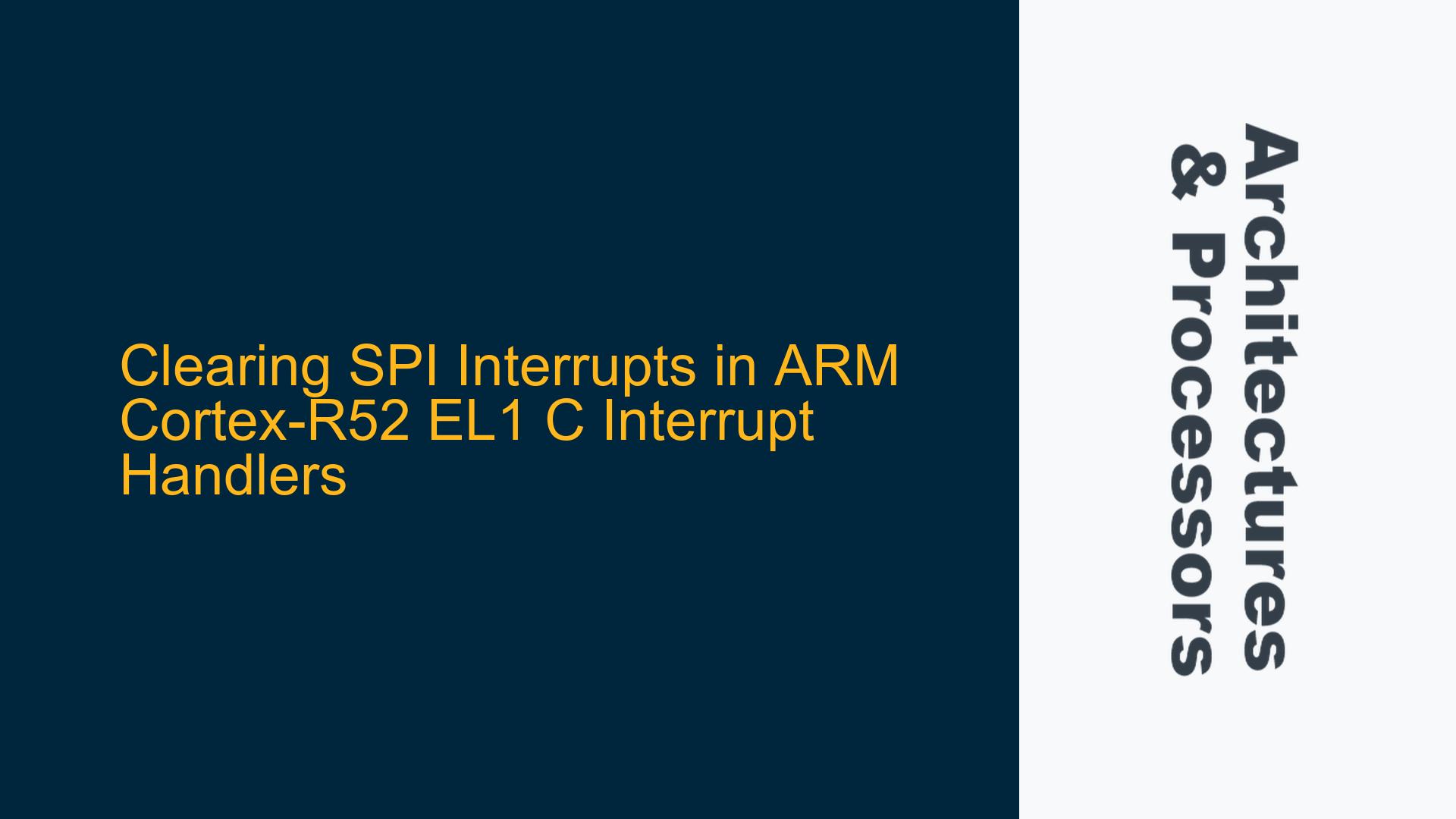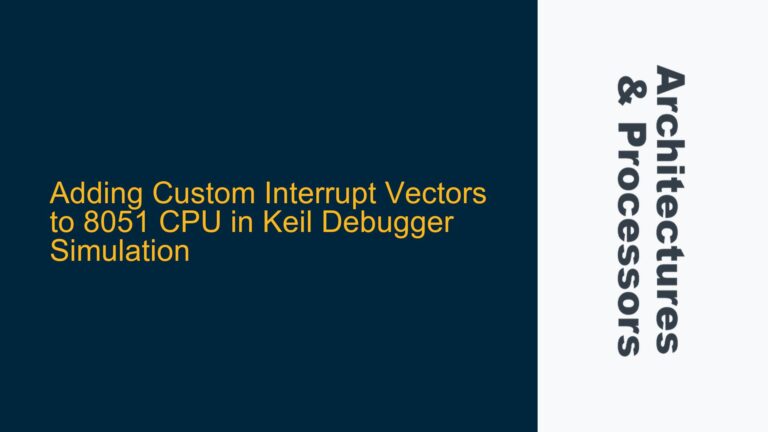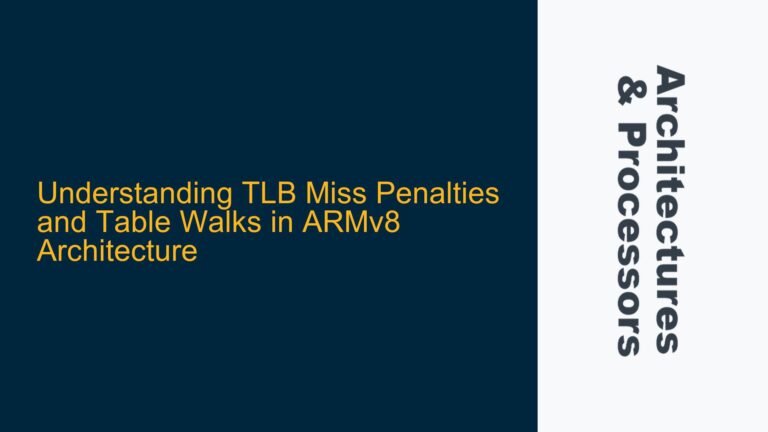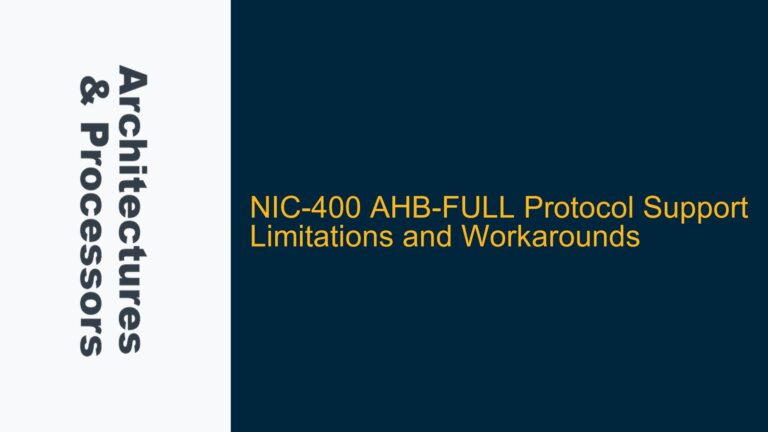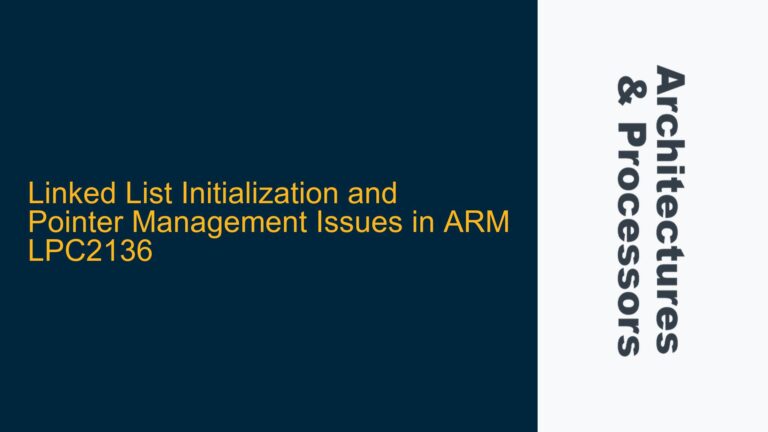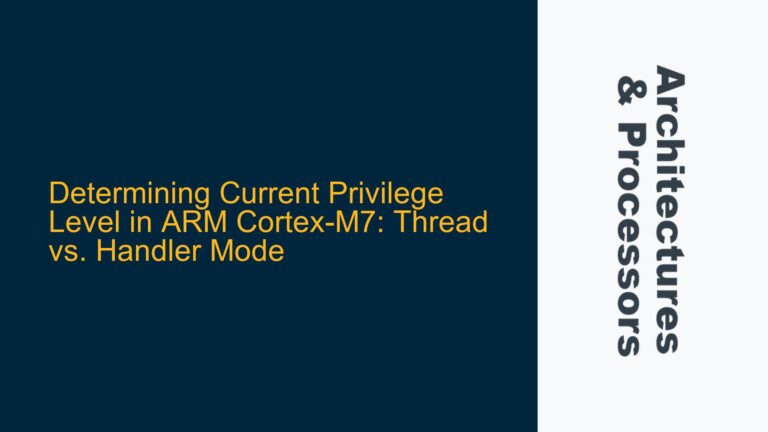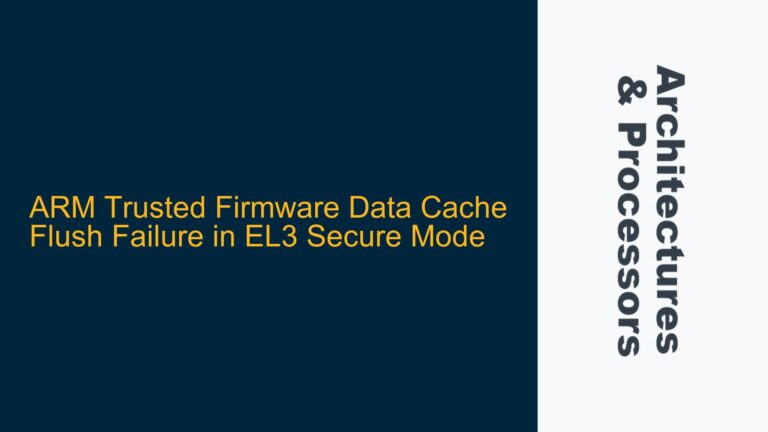ARM Cortex-R52 GIC Interrupt Handling and SPI Clearance Mechanism
The ARM Cortex-R52 processor, part of the ARMv8-R architecture, is widely used in real-time and safety-critical systems. One of the critical aspects of working with this processor is understanding how to handle interrupts, particularly Shared Peripheral Interrupts (SPIs), in an Exception Level 1 (EL1) C interrupt handler. The Generic Interrupt Controller (GIC) plays a central role in managing interrupts, and improper handling can lead to missed interrupts, spurious interrupts, or system instability. This guide delves into the intricacies of clearing SPI interrupts in an EL1 C interrupt handler, focusing on the GIC registers, their states, and the sequence of operations required to ensure proper interrupt handling.
The GIC is responsible for prioritizing and distributing interrupts to the CPU. When an SPI is triggered, the GIC updates its internal state machine, and the CPU must acknowledge and clear the interrupt to allow subsequent interrupts to be serviced. The process involves reading the Interrupt Acknowledge Register (ICC_IAR), servicing the interrupt, and writing to the End of Interrupt Register (ICC_EOIR). However, the sequence and timing of these operations are critical, and misunderstandings can lead to subtle bugs.
GIC State Machine and ICC_CTLR.EOImode Configuration
The GIC maintains a state machine for each interrupt, which includes states such as Inactive, Pending, Active, and Active + Pending. The transition between these states is governed by the GIC registers and the CPU’s actions. One of the key configurations affecting interrupt handling is the ICC_CTLR.EOImode bit. This bit determines whether the GIC operates in Priority Drop mode (EOImode = 0) or Priority Drop and Interrupt Deactivation mode (EOImode = 1).
In Priority Drop mode (EOImode = 0), writing to the ICC_EOIR register clears the active state of the interrupt and drops the CPU’s running priority. This mode is simpler and is often the default configuration. However, it requires that the peripheral interrupt signal be cleared before writing to ICC_EOIR to prevent the interrupt from being immediately reasserted.
In Priority Drop and Interrupt Deactivation mode (EOImode = 1), writing to the ICC_EOIR register only drops the CPU’s running priority, and a separate write to the ICC_DIR register is required to deactivate the interrupt. This mode provides finer control over interrupt handling but introduces additional complexity.
The choice of EOImode depends on the specific requirements of the system and the behavior of the peripheral generating the interrupt. For level-sensitive interrupts, EOImode = 0 is often sufficient, provided the peripheral interrupt signal is cleared before writing to ICC_EOIR. For edge-sensitive interrupts, EOImode = 1 may be necessary to ensure that the interrupt is properly deactivated.
Interrupt Acknowledge and End of Interrupt Sequence
The sequence of operations for handling an SPI in an EL1 C interrupt handler is as follows:
-
Read ICC_IAR: The first step is to read the Interrupt Acknowledge Register (ICC_IAR). This operation acknowledges the interrupt and returns the Interrupt ID (INTID) of the highest priority pending interrupt. Reading ICC_IAR also updates the GIC state machine, transitioning the interrupt from the Pending state to the Active state (or Active + Pending state if the interrupt is still asserted).
-
Service the Interrupt: The interrupt handler must service the interrupt by performing the necessary actions, such as reading data from a peripheral or clearing a status register. For level-sensitive interrupts, it is critical to clear the peripheral interrupt signal before proceeding to the next step. Failure to do so can result in the interrupt being immediately reasserted.
-
Write ICC_EOIR: After servicing the interrupt, the handler must write the INTID to the End of Interrupt Register (ICC_EOIR). This operation informs the GIC that the interrupt has been serviced and updates the GIC state machine. In EOImode = 0, writing to ICC_EOIR clears the active state of the interrupt and drops the CPU’s running priority. In EOImode = 1, writing to ICC_EOIR only drops the CPU’s running priority, and a separate write to ICC_DIR is required to deactivate the interrupt.
-
Check for Additional Interrupts: After writing to ICC_EOIR, the handler can check for additional pending interrupts by reading ICC_IAR again. If no other interrupts are pending, ICC_IAR will return a spurious interrupt ID (0x3FF).
The following table summarizes the key GIC registers and their roles in interrupt handling:
| Register | Description | Role in Interrupt Handling |
|---|---|---|
| ICC_IAR | Interrupt Acknowledge Register | Acknowledges the interrupt and returns the INTID. Transitions the interrupt to Active state. |
| ICC_EOIR | End of Interrupt Register | Informs the GIC that the interrupt has been serviced. Clears the active state (EOImode = 0). |
| ICC_DIR | Deactivate Interrupt Register | Deactivates the interrupt (EOImode = 1). |
| ICC_CTLR | CPU Interface Control Register | Configures the GIC behavior, including EOImode. |
| GICD_ICACTIVER | Distributor Interrupt Clear-Active Register | Clears the active state of an interrupt (rarely needed in normal operation). |
Common Pitfalls and Best Practices
One common pitfall is failing to clear the peripheral interrupt signal before writing to ICC_EOIR in EOImode = 0. This can result in the interrupt being immediately reasserted, causing the handler to enter an infinite loop. To avoid this, ensure that the peripheral interrupt signal is cleared before writing to ICC_EOIR.
Another common issue is misunderstanding the role of GICD_ICACTIVER. While this register can be used to manually clear the active state of an interrupt, it is generally not necessary in normal operation. Writing to ICC_EOIR (or ICC_DIR in EOImode = 1) automatically updates GICD_ICACTIVER, and manual intervention is rarely required.
When working with level-sensitive interrupts, it is also important to consider the timing of operations. For example, if the peripheral interrupt signal is cleared too late, the GIC may not detect the change, and the interrupt may remain in the Active state. To mitigate this, use memory barriers to ensure that the order of operations is preserved.
For edge-sensitive interrupts, the behavior of the GIC and the peripheral must be carefully coordinated. In some cases, it may be necessary to use EOImode = 1 to ensure that the interrupt is properly deactivated. Additionally, consider the possibility of interrupt storms, where a peripheral generates a large number of interrupts in a short period. In such cases, it may be necessary to implement rate limiting or other mitigation strategies.
Finally, always refer to the ARM documentation for the specific GIC version and processor core being used. The behavior of the GIC can vary between versions, and the documentation provides detailed information on the state machine, register descriptions, and recommended practices.
Conclusion
Handling SPI interrupts in an EL1 C interrupt handler on the ARM Cortex-R52 requires a deep understanding of the GIC state machine, the roles of key registers, and the sequence of operations required to acknowledge and clear interrupts. By following the best practices outlined in this guide and carefully considering the configuration of ICC_CTLR.EOImode, developers can ensure reliable and efficient interrupt handling in their embedded systems.
